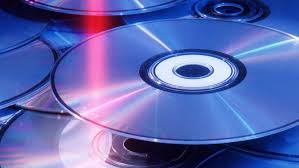When are atrocities so bad that any attempt to represent them in beautiful music is a bit dishonest?
Unlikely as it seems, The City of Prague Philharmonic has produced wonderful Hollywood film scores for years. They play the skill of the original studio musicians recording in the Sony/Streisand and Warner/Eastwood scoring stages in Los Angeles. But listening to their sumptuous scores from war movies written by John Williams, Jerry Goldsmith and others reveals a vexing irony. It turns out that the music we humans want to hear while watching portrayals of the worst of our actions is frequently vivid and beautiful. The uglier the war, the more affecting the score seems to be, as in John Williams’ “Hymn to the Fallen” used in Steven Spielberg’s searing World War II drama, Saving Private Ryan.
There seems to be a pattern in which we convert our presumed hatred of combat and death into laments that ennoble what should perhaps remain ugly. When are atrocities so bad that any attempt to represent them in beautiful music is a bit dishonest?
There’s no shortage of answers. Classic war films predictably tend to define “our side” as especially heroic, and they are not necessarily wrong. But the musical jingoism that often creeps in is maybe more reassuring that it should be.
More to the point, music is a non-verbal abstract of feeling. Empathy for war’s casualties is a way for the heart to offer its own compensating response. Because violence begets regret and loss, it has its own rich musical vocabulary. Musical laments are especially their own forms of consolement. Williams’ popular theme from Schindler’s List, written in D- minor is a sorrowful expression for victims and survivors of the Holocaust. The conversion of the core idea within a film into music has rarely been more effective.
Director, Stephen Spielberg, seems to understand that what is harrowing to watch on film might be tamed and explained by the universals expressed in musical conventions that we already know. It also helps if you are working with John Williams.
Following a very different logic, it may also be true that war music can also perform a tribal function. It asks those who respond to it to recognize group norms of pride, vindication and moral superiority that are often implicit in the musical tropes of groups bound by a shared and just cause. Simple and primitive, perhaps, but listening to the Prague musicians saw their way through the music of Max Steiner’s score for Sergeant York (1941), or Randy Edelman’s for Gettysburg (1993), or Maurice Jarre’s for The Longest Day confirms that we can feel tribal vindication for even the darkest of acts.
![]()




